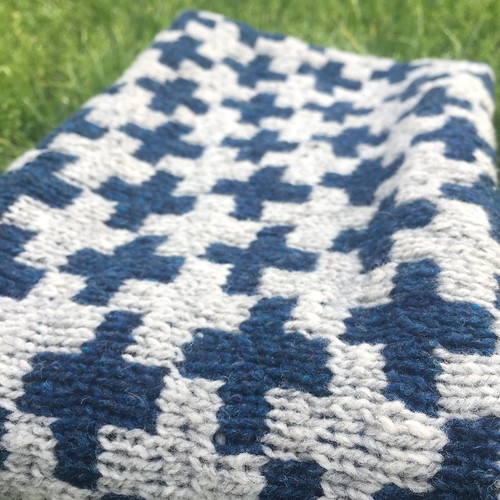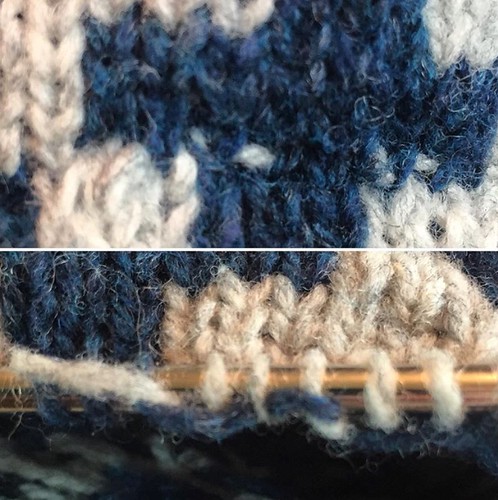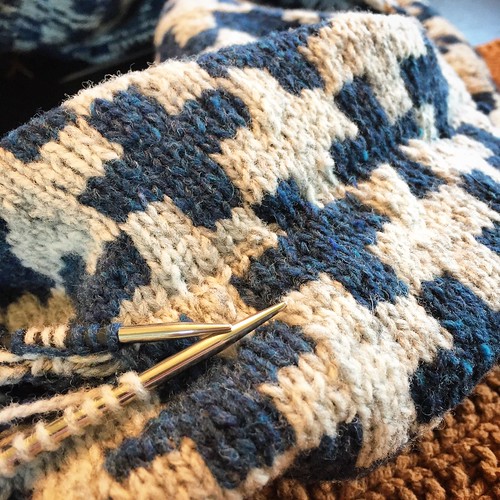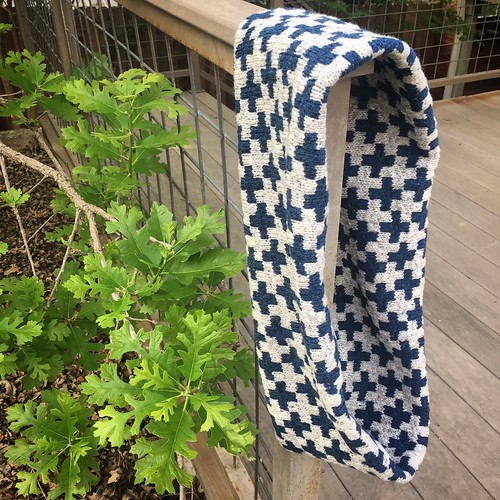I finally finished the Jujika Cowl yesterday. The major knitting took about three weeks. Then I spent a week and a half just seaming the thing.
This cowl is basically a deflated tire tube, or a flattened donut. Or a torus with no volume inside. You get the idea. It's constructed as a long tube knit in the round. The last round is a seaming round that then joins the last round knit to the first round knit. When everything is done, it should look like a solid piece of fabric. More about that later.
I didn't swatch for this project, figuring it wouldn't really matter being a thing that drapes around a neck. It doesn't really have to "fit" anything, right? About halfway through I regretted that decision. The whole thing was supposed to be about 26 inches long. Mine was 19 inches. I blocked it rather aggressively, not always the wisest thing to do with this rather delicate Brooklyn Tweed Loft, and managed to get it to 24 inches, although it has since shrunk a bit. I'm happy with the density of the fabric and I think larger needles would have made the fabric looser than I wanted. As it is, I can see some of the opposing yarn catches showing through the fabric.
After blocking the un-seamed tube, one is supposed to unzip the provisional crochet cast on and put it on a needle, then graft between the two pieces using a Kitchener-like stitch. It is Kitchener, but you start the 4-step sequence in a different place, and using the color that matches the stitches on the lower needle. Yes - grafting 270 stitches in two different colors. At first it seemed like it was going okay, despite the usual tension issues I have with Kitchener grafting. But then, to my horror, I realized that I had little bars of the opposite color popping up here and there.
It appears that when I knit the very first row of this thing onto the provisional crochet stitches, I had twisted the yarn, probably as a result of trying to catch the opposite color yarn behind. But in doing so, I had caught the opposite yarn within stitches rather than behind them! Can you see the bits of white popping through in the top half of the photo? And the blue strand caught inside the white stitches in the bottom half? Warning to those who try this pattern themselves -- don't bother catching the yarn in the first row. In fact, if your stranded knitting tension is good, you might consider avoiding catching the yarn at all. It's not like anything is going to catch on long floats; they will all be locked away.
What to do? A cast-on row can, in theory, be picked out and re-knit in the opposite direction, but this is really difficult to do (it doesn't just unravel like the last row) and seemed like a lot of work to fix one row. So instead of fixing it, I decided to hide it. I ran a bit of waste yarn through the cast on stitches and tied the ends to together. It's there now, just dangling somewhere within the cowl, unseen. Then, I used a smaller needle (good idea, Staci!) to pick up the right leg of the stitches of the next row down (or up, depending on how your'e looking at it) and re-knit the last row in the opposite direction. This does shift everything over half a stitch, but as it turned out, it's not all that noticeable in such a small stitch pattern. I did have to adjust the beginning step of the grafting instructions to accommodate this, but it all turned out fine. In the picture to the right, you can see the seam line a bit, but I don't think it's too distracting. It's really a clever design - I just wish I'd been able to make it work the way it was supposed to.
There is a small bit of inflexibility along this seam because of the waste yarn behind, although I tried to keep that as loose as possible. And because of my usual tension issues with Kitchener stitch the seam is noticeable in places, but overall I'm pretty happy. I tried it on myself (it's not really me) and it hangs about right when completely open as in this picture. I thought I should be able to double it up and have a tight-fitting neck warmer, and I could, but it wasn't easy and it wasn't pretty. The effect was a bit too Uncle Fester. I may re-block this again just to try and smooth out the seam and try to get a bit of extra length to it.
Glad I made this, though, and I have an idea of someone to give it to. What's up next? Not sure, but I'm thinking of diving back into the world of Herbert Niebling lace patterns...



